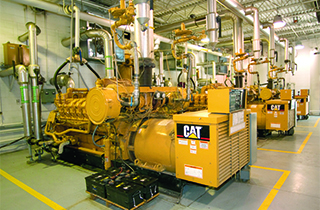Green Co-ops

Wind, solar, biomass, landfill gas, geothermal, water flowing over dams—the options for generating electricity from renewable resources vary greatly in each region of the United States.
In Kentucky, the two best sources for steady green electricity production are water at dams and the gases in decaying garbage. Eleven years ago, East Kentucky Power Co-op, which generates and transmits electricity to 16 local distribution co-ops in 87 counties, became the first utility in the state to generate its own renewable power. That’s when the co-op began operating its first power plant fueled by methane gas from a landfill. Since then, East Kentucky Power Co-op has expanded this renewable energy program and now generates electricity at six landfill gas plants. East Kentucky Power Co-op also purchases renewable energy from federally operated hydroelectric power plants at Laurel and Wolf Creek dams.
Big Rivers Electric Co-op, which generates and transmits electricity to three local distribution co-ops in 22 counties, also buys renewable electricity from two federally operated hydroelectric dams. Although not a cooperative, the Tennessee Valley Authority provides power to five local distribution co-ops in southwestern Kentucky. Much of that power is generated at hydroelectric dams, but electricity also flows into the grid from wind turbines and solar panels operated by TVA.
National Rural Electric Cooperative Association CEO Jo Ann Emerson says, “Cooperatives are committed to a diverse energy portfolio that includes an array of renewable energy resources.” During the last five years, electric cooperatives throughout the United States have doubled their owned and purchased renewable energy options. Electric co-ops now have access to 5.9 gigawatts of electricity produced from a variety of renewable resources—that’s enough power for almost 3 million rural homes.

